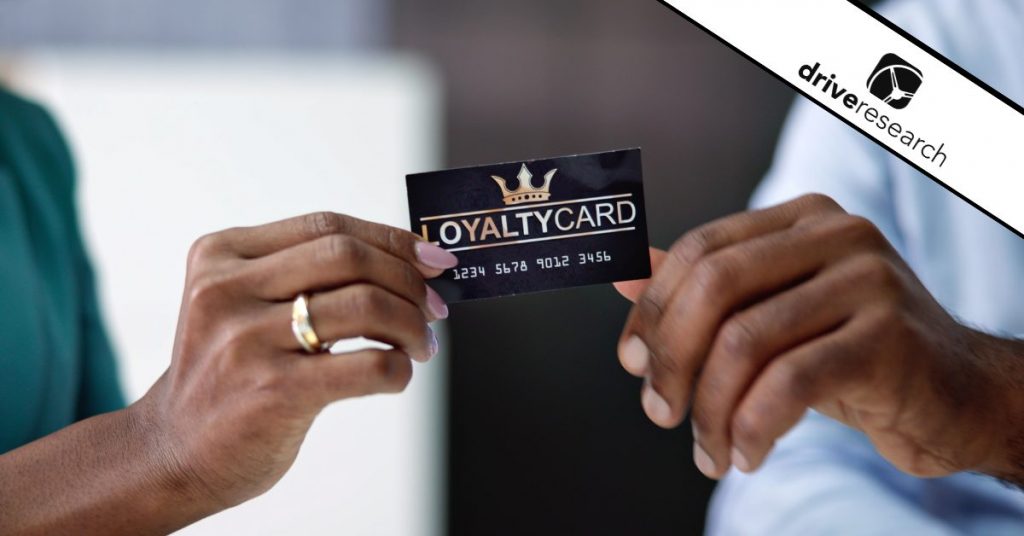
If you have ever stayed at a hotel, purchased airlines tickets, or even bought a piece of clothing – there is a good chance that you were, at one point in time, asked to join that brand’s loyalty rewards program.
With roughly 90% of adults in the US belonging to one loyalty program, this is an area ripe for market research.
As a way to gain access to more amenities and perks, these offerings show customers that they are valued and appreciated. However, not all customer rewards programs are created equally, and some are more of a household name than others.
At Drive Research, we work with organizations across several industries, measuring brand equity to assess the market and understand customer perceptions and behaviors.
In this article, we’ll discuss a recent online survey we conducted to help offer actionable data that would successfully rebrand their loyalty rewards program.
Background and Objectives
Our full-service market research firm recently conducted an online survey after being commissioned by a national hotel chain. We surveyed Americans from across the country who had stayed at a hotel in the last 3 years.
The client had grown rapidly during the COVID-19 pandemic and was looking to gauge the equity in their current hotel loyalty program.
Tip: Conducting market research in the travel space? Ensure your criteria allows for the capture of data from at least a year before the start of the COVID-19 pandemic!
After a series of meetings with the client, our team was able to compile a list of primary objectives for the research.
Some of those key objectives included:
- Measure the aided and unaided awareness of the brand’s loyalty program, as well as those of competitors
- Gauge program perceptions, in terms of positive or negative
- Understand what travelers want to feel from the name of a loyalty program
Our Methodology
Our client for this study wanted to obtain data from a large sample size in a timely manner, without having to break the bank.
With this in mind, we recommended conducting an online survey. They help cut down costs and allow us to obtain a lot of data in shorter time frames.
One of the first steps to creating an online survey is first drafting an actual survey document.
This is an important step in measuring brand equity–the questions you ask (and even the way you ask them) can have a major impact on how your audience responds and the quality of data that you receive.
For instance, research shows that at least 56% of Americans want to travel for fun and relaxation. With this number in mind, ensuring your questions are carefully crafted from a guest’s perspective will yield the best feedback.
Here is a couple of example questions that we asked in our hotel loyalty program survey:
- How many times have you stayed at a hotel in the last three years?
- For what purpose(s) did you stay at a hotel in the last three years?
- What hotel loyalty programs are you aware of? (unaided, open-ended)
- Which of the following hotel loyalty programs are you aware of? (aided list)
- What is your perception of each of the following hotel loyalty programs? (positive, neutral, negative)
- How likely would you be to join each of the following hotel loyalty programs?
After using a collaborative approach to design the survey document, we were ready to begin collecting data.
We utilized our online panel partners who provide us with access to millions of people across the globe who are ready and willing to participate in research.
Our survey was shared with travelers across the 50 states, and within just a few weeks, we were ready to analyze our data!
Recommended Reading: 7 Tips to Help With Travel and Tourism Surveys
The Results
Before diving into the analysis phase, our team conducted thorough quality checks to ensure that our data was clean and ready for the next step. Making sure you’ve obtained high-quality data is of the utmost importance when conducting research.
While the more detailed results of the survey remain confidential with our client, here are a few notes about the final numbers:
- 1,000 travelers, aged 18 and older, responded to our survey
- Respondents answered 40 questions
- 46% of respondents were male, 53% were female, and 1% were non-binary
- 16% of respondents hailed from the Northeast, 22% from the Midwest, 43% from the South, and 19% from the West
- The margin of error was 3.1% (meaning that another round of research with another 1,000 respondents would yield results +3.1% or -3.1%)
When data analysis was completed, our team shared the final deliverables with our client, including survey analysis, a full raw data file, a PowerPoint presentation of each question’s data, and more.
Our team was proud to provide a leading hospitality organization with the data necessary to make changes and improvements to their loyalty program–ultimately maximizing the guest experience at hotels across the world.
Conduct Market Research to Rebrand Your Loyalty Program
Curious about how to measure brand value? We know what to do and can help your organization through the process.
Drive Research is a market research company. Our team of experts will work with you from start to finish, to ensure you leave us with a strong research study.
Curious to learn more about our market research services? Get in touch with us through any of the ways below!



